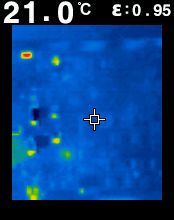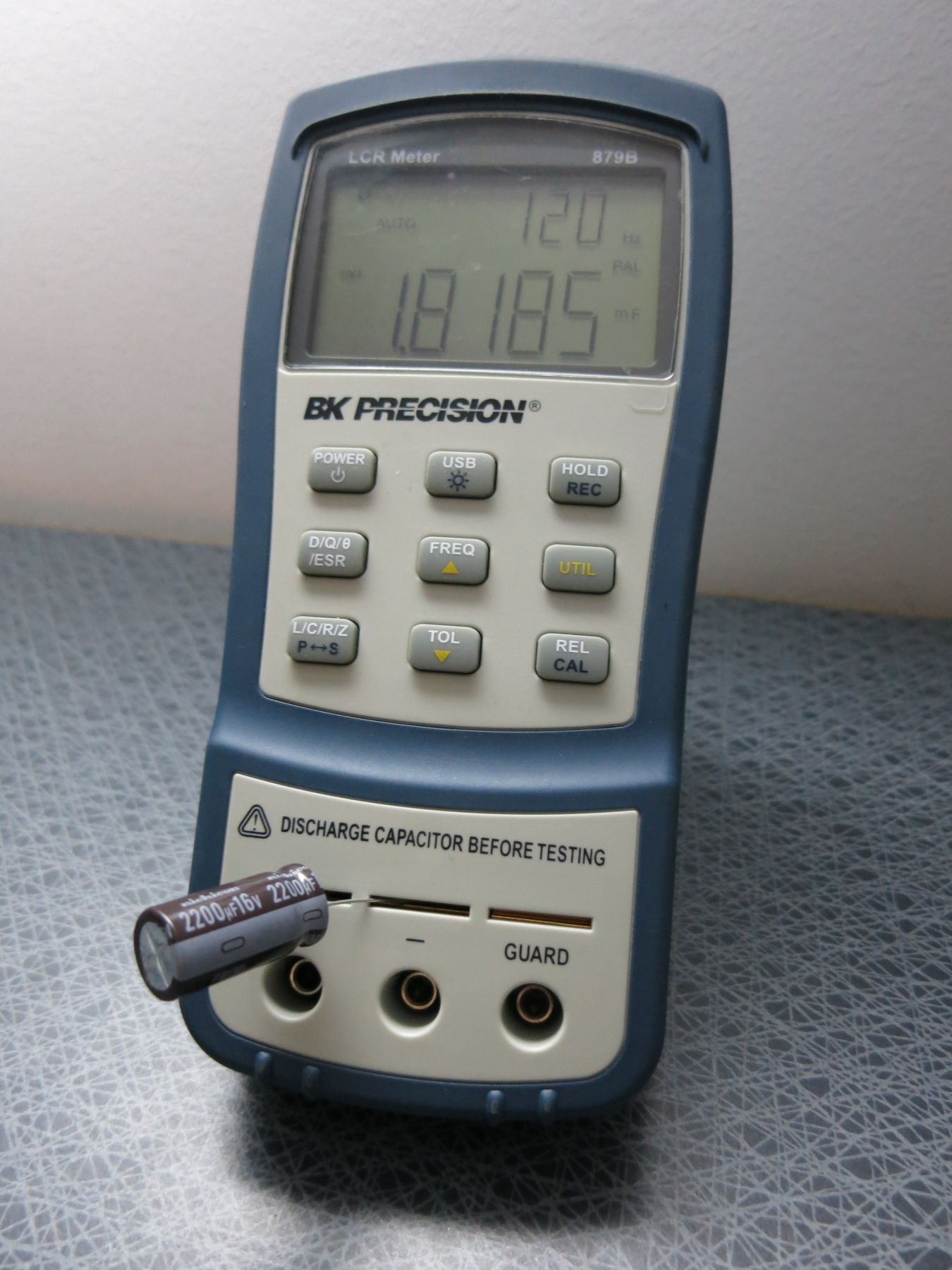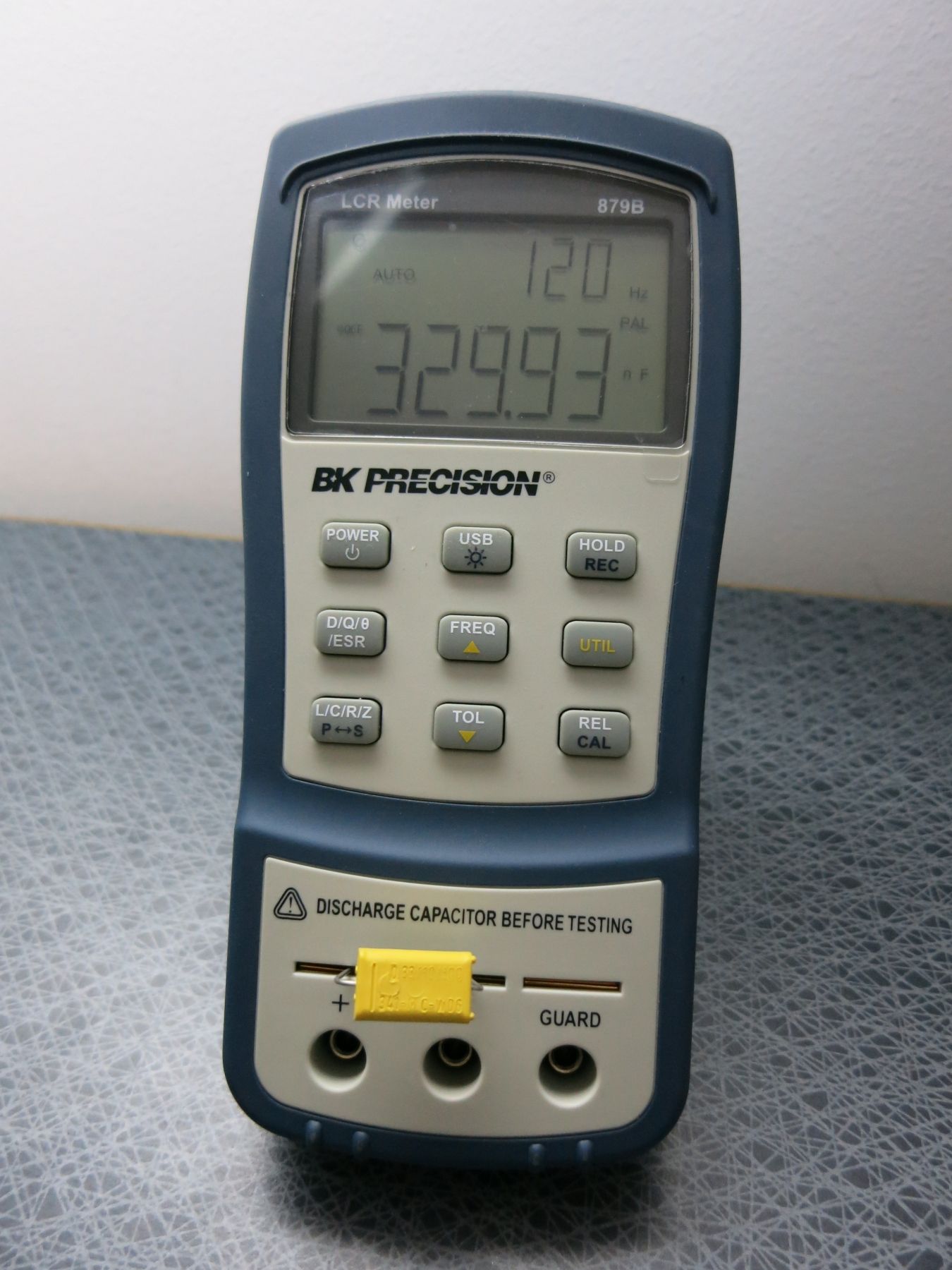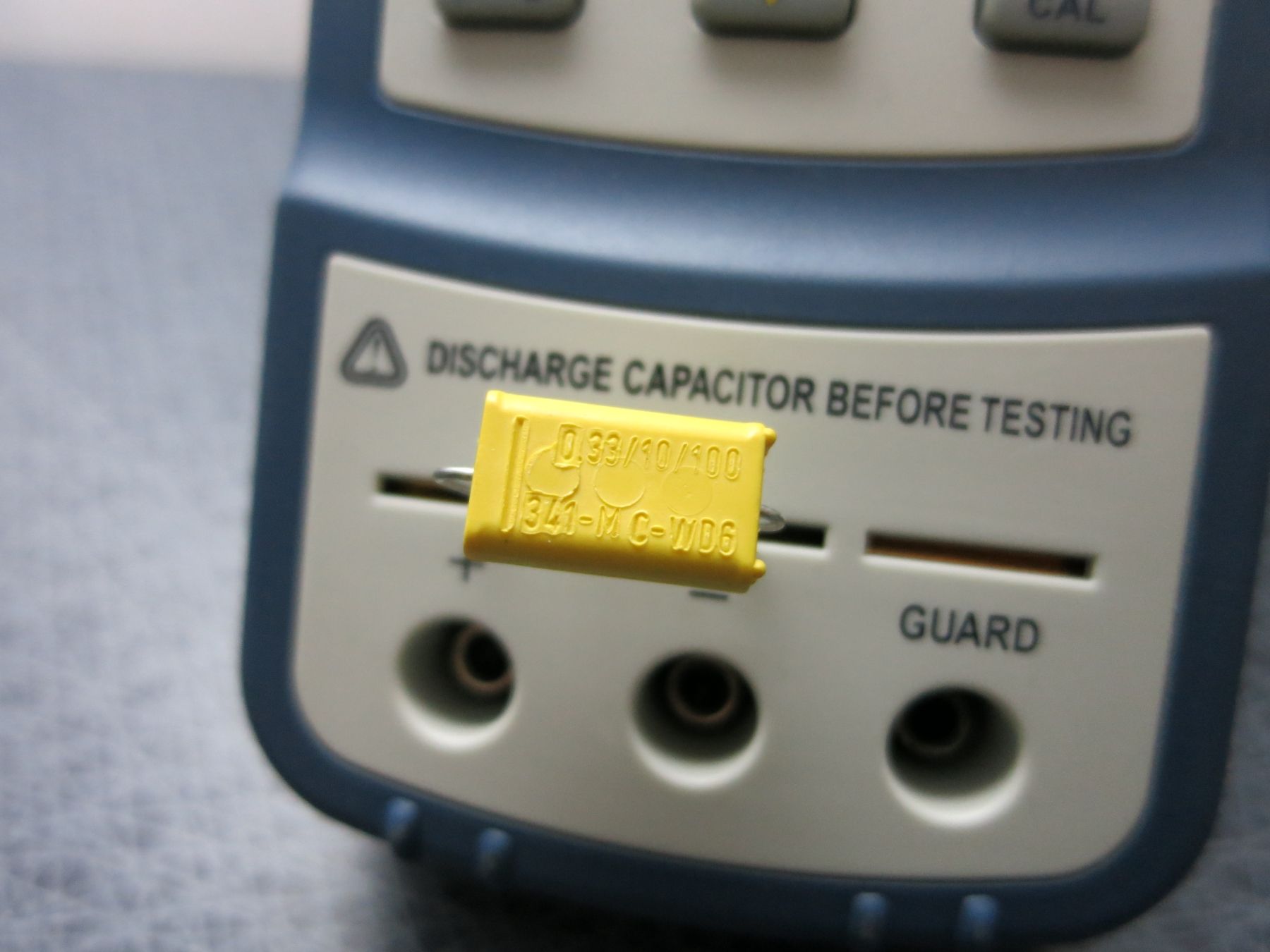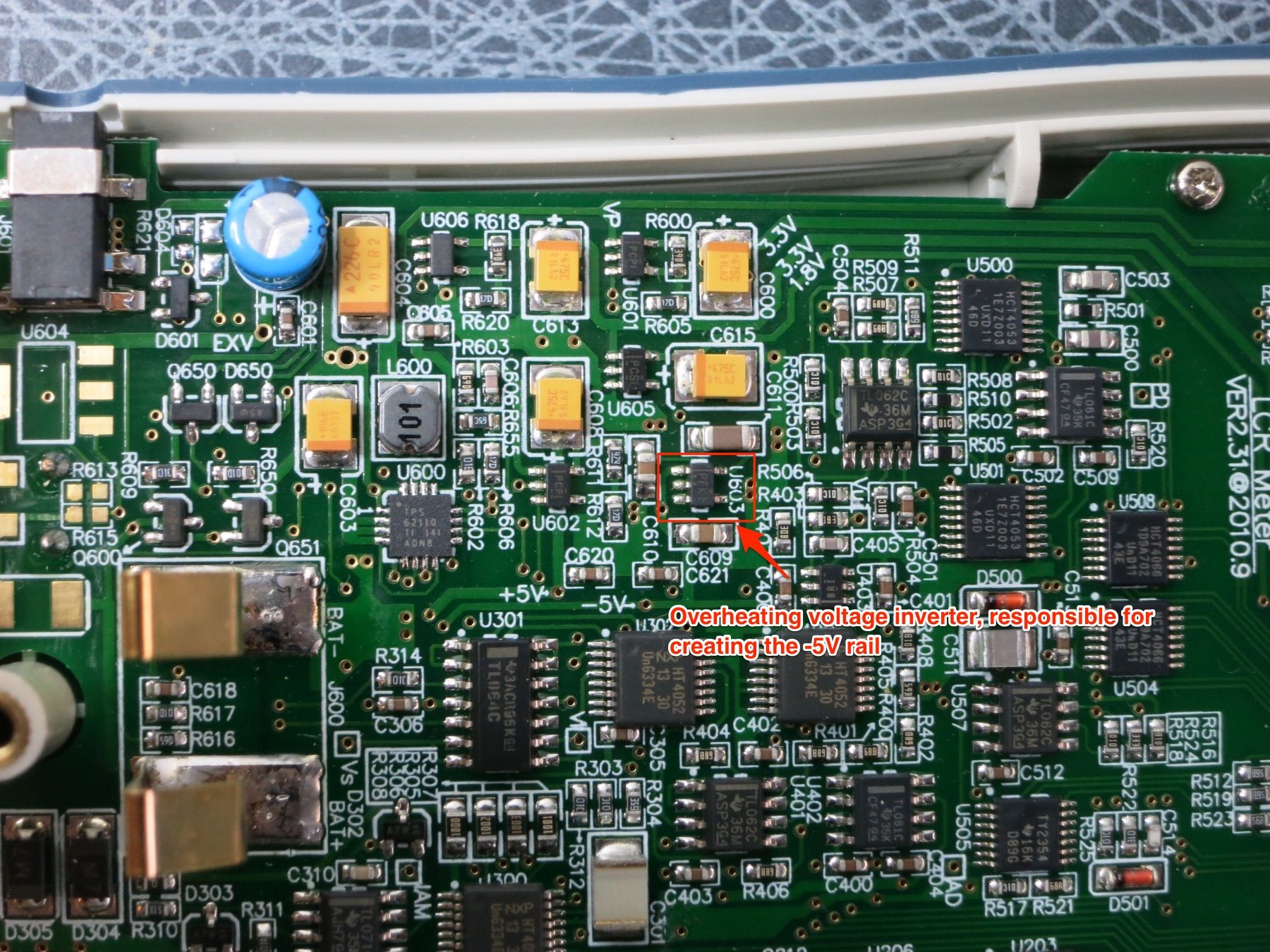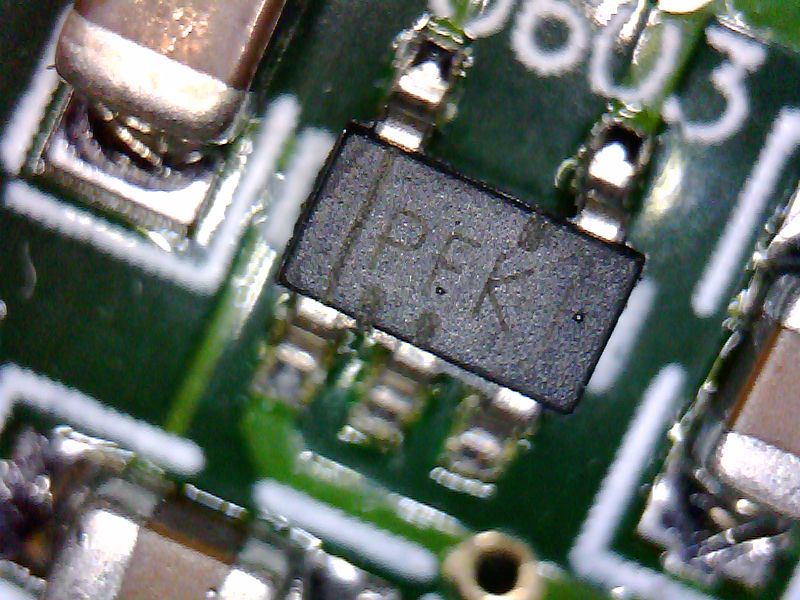Fixing a broken BK Precision 879b LCR meter
Once you got yourself a good multimeter, a good LCR meter is probably the next step. Remember to discharge any caps before measuring them though - otherwise the result might be what caused this post...
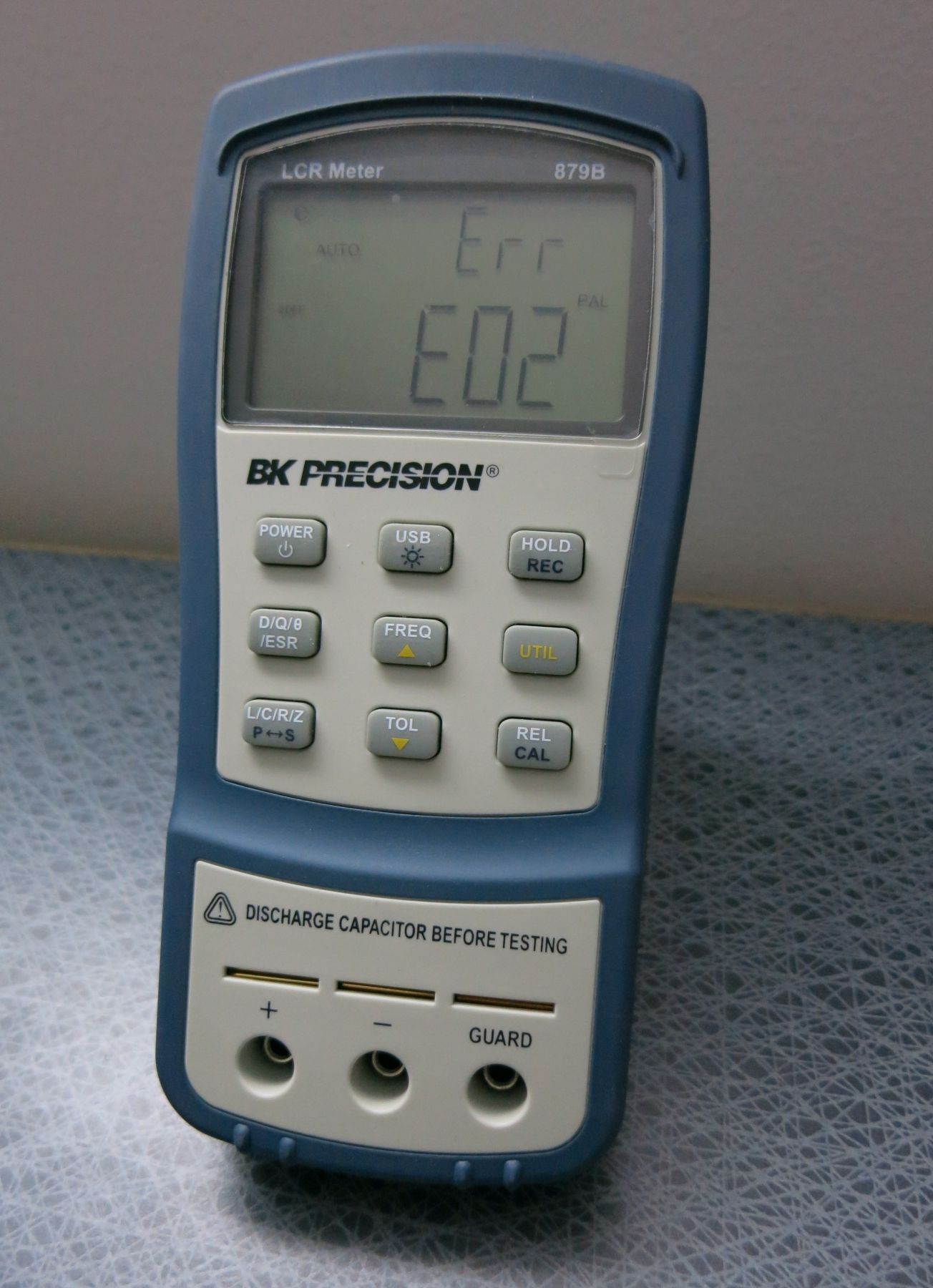
Some time ago I got what I thought was a score on Ebay – a really nice LCR meter at a very good price. Ok, it was broken, but the error message indicated it was just the fuse that was gone. Looked like on the right.
According to BK’s help site, this error could be caused by a busted fuse. It’s an SMD fuse, but not too hard to replace. Unfortunately that didn’t solve the problem… the meter was still dead after fuse replacement.
So, enter a new toy I got recently: A FLIR TG165 IR camera. Did an unboxing of it recently, it’s a very nice piece of gear. Got it from SOS Electronic, it cost a fair bit of money, but still nothing compared to what FLIR cameras cost just a few years ago.
After replacing the fuse I powered the meter from a bench supply, and noticed a couple of things:
- Both +5V and -5V rails were showing way different values, compared to their nominal ones.
- The meter pulled more than 200 mA from the supply.

Considering the meter normally runs off a standard 9V battery, 200 mA didn’t seem realistic. Something was wrong.. But all that energy has to go somewhere, and eventually turn into heat. So it’s just a matter of pointing the FLIR to the PCB and look for hot spots. And sure enough, two small SOT23-5 packages are way hotter than anything else on the board. The right, more prominent hotspot is a Texas Instrument TPS60400DBVT, which is a voltage inverter. Following the PCB traces from the -5V test point on the board, they ended up at that right hotspot – it was now a strong candidate for replacement.
Desoldering it was easy, it was then just a matter of powering the meter from a bench supply, providing +9V into the meter’s regular battery terminals, and -5 into the -5V test point. No problems, the meter came alive just fine.
A replacement regulator arrived a few days ago, soldering it in, re-assembling everything, adding a fresh 9V battery, and everything works great again. Win!
